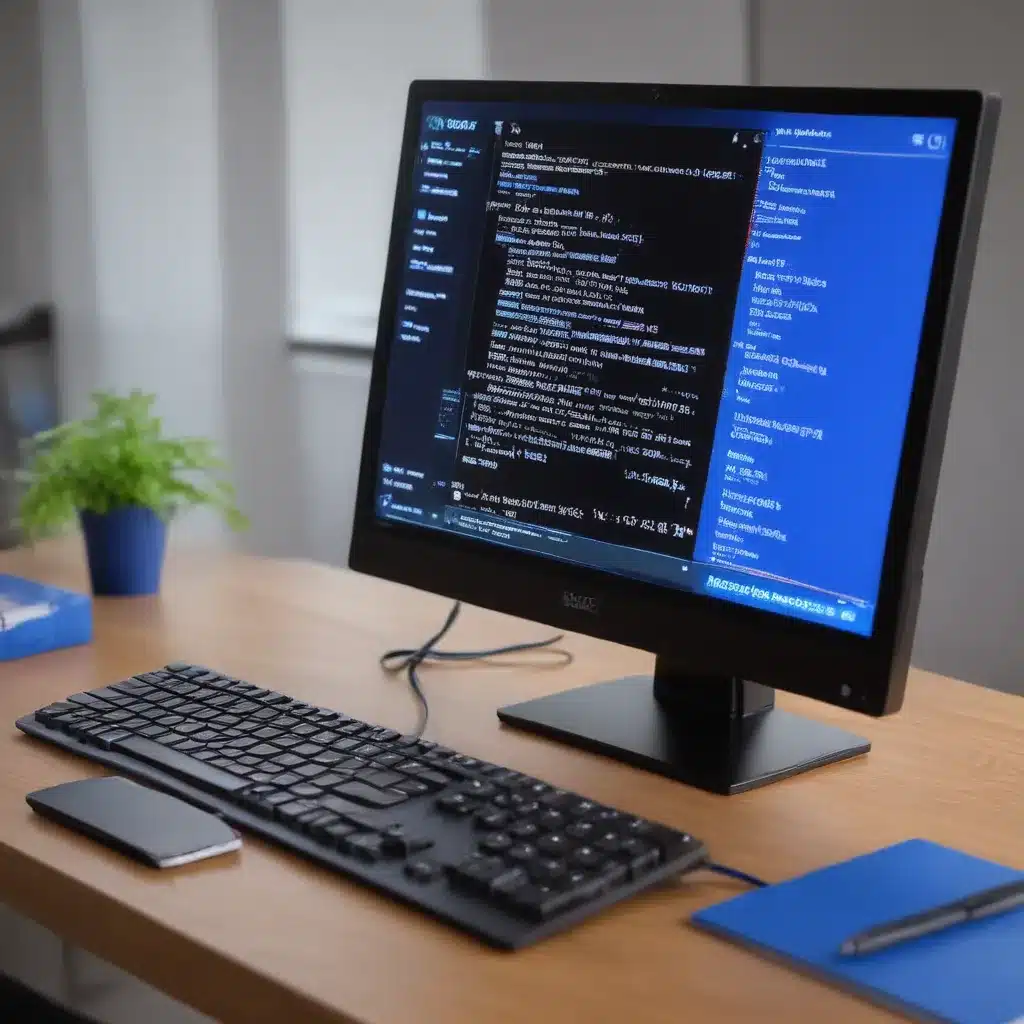The Blue Screen of Death: A Terrifying Encounter
As an avid computer user, I’ve had my fair share of encounters with the dreaded Blue Screen of Death (BSOD). It’s a moment that strikes fear into the heart of even the most seasoned tech enthusiast. The screen suddenly flashes with a cryptic error message, and just like that, your beloved machine comes to a screeching halt. But fear not, my fellow techies! In this comprehensive guide, I’ll walk you through the process of identifying and resolving those pesky BSOD errors, so you can get back to dominating the digital world like a pro.
Unraveling the Mystery: Understanding BSOD Errors
BSOD errors are essentially Windows’ way of telling you that something has gone horribly wrong under the hood. These errors can be caused by a wide range of issues, from faulty hardware to software conflicts. The key to fixing them lies in understanding the underlying problem.
One of the most common BSOD errors is the “IRQL_NOT_LESS_OR_EQUAL” error, which often occurs when incompatible drivers or hardware components clash [1]. Another culprit is the “WHEA_UNCORRECTABLE_ERROR,” which can be triggered by everything from unstable overclocking to failing storage devices [2,3,4,5].
But fear not, my friends! With a little detective work and a dash of technical know-how, we can track down the root cause of these issues and put an end to the BSOD madness.
Troubleshooting BSOD Errors: A Step-by-Step Guide
Step 1: Gather the Evidence
The first step in fixing a BSOD error is to gather as much information as possible. Make a note of the specific error code and any other relevant details, such as when the error occurred and what you were doing at the time. This information will be crucial in identifying the underlying problem.
Step 2: Analyze the Dump Files
If your system is generating BSOD errors, it’s likely saving diagnostic information in the form of “dump files.” These files can provide valuable clues about the cause of the problem. To access them, head to the Control Panel, navigate to “System,” and then click on “Advanced system settings.” From there, you can configure your system to save dump files and review them for more information [3].
Step 3: Update Drivers and Software
Outdated or incompatible drivers and software can be a common culprit behind BSOD errors. Make sure to keep your system up-to-date by regularly checking for driver and software updates from the manufacturer’s website. This simple step can often resolve a wide range of BSOD-related issues [4,5].
Step 4: Check for Hardware Failures
In some cases, BSOD errors can be caused by malfunctioning hardware components, such as a failing hard drive or a problematic RAM module. You can use tools like MemTest86 to test your system’s RAM, and run a comprehensive hardware diagnostic to identify any potential issues [3].
Step 5: Optimize Your System Settings
Sometimes, a simple tweak to your system settings can be the key to resolving BSOD errors. For example, disabling Intel Turbo Boost or adjusting your RAM’s clock speed can often prevent these crashes [5,6,7].
Mastering the BSOD: Real-World Solutions
Now, let’s put these troubleshooting steps into practice with some real-world examples:
Case Study 1: The Premiere Pro Predicament
Imagine you’re a video editor working on a tight deadline, and suddenly, your system starts crashing with an “IRQL_NOT_LESS_OR_EQUAL” error while using Adobe Premiere Pro. After some digging, you discover that the issue is likely related to a compatibility problem between the software and your system’s USBXHCI.sys driver [1]. To resolve the problem, you decide to reinstall the drivers, and voila – the crashes stop, and you’re back to editing like a pro.
Case Study 2: The Matebook Meltdown
Now, let’s say you’re the proud owner of a Huawei Matebook X Pro, and you’ve been experiencing frequent “WHEA_UNCORRECTABLE_ERROR” crashes, especially when booting up your machine. After reviewing the dump files and trying various software fixes, you realize that the issue is likely due to a failing SSD [4]. By simply reseating the SSD, you’re able to stabilize your system and get back to work without any more BSOD-related interruptions.
Embracing the Challenge: A Parting Message
Fixing BSOD errors may seem like a daunting task, but with the right approach and a bit of troubleshooting know-how, you can conquer these digital demons with ease. Remember, every BSOD encounter is an opportunity to hone your technical skills and become a true master of the blue screen.
So, the next time you find yourself staring into the abyss of a BSOD, don’t panic – embrace the challenge, follow the steps outlined in this guide, and watch as your system rises from the ashes like a phoenix, ready to tackle any task you throw its way. Happy troubleshooting, my fellow tech enthusiasts!
[1] https://answers.microsoft.com/en-us/windows/forum/all/windows-10-bsod-error-0xc000021a/764d25ea-7122-46aa-8acf-9b8de31d6c92
[2] https://www.reddit.com/r/techsupport/comments/161owmj/irql_not_less_or_equal_bsod_error_while_using/
[3] https://answers.microsoft.com/en-us/windows/forum/all/various-bsod-errors-on-startup-every-2-3-days/5a5e1330-6605-49ee-a01e-daa1a26fa13b
[4] https://www.reddit.com/r/MatebookXPro/comments/o5n0i8/bsod_whea_uncorrectable_error_issue_persists/
[5] https://community.adobe.com/t5/premiere-pro-discussions/windows-10-pro-blue-screen-after-starting-export-stopcode-whea-uncorrectable-error/td-p/9200567
[6] https://h30434.www3.hp.com/t5/Printing-Errors-or-Lights-Stuck-Print-Jobs/HP-Officejet-Pro-7740-Blue-Screen-error-B852E912/td-p/8203326
[7] https://forum.corsair.com/forums/topic/176006-vengeance-rgb-pro-sl-ddr4-3600mhz-errors-in-windows-and-games/













